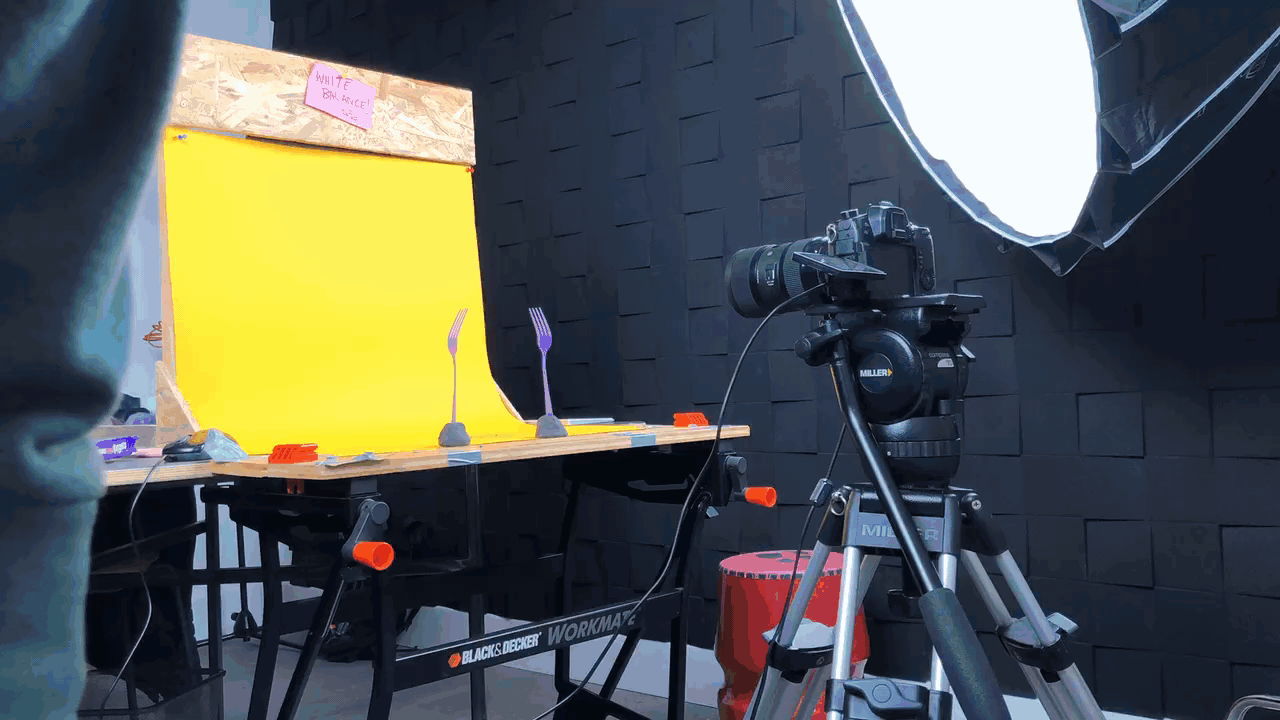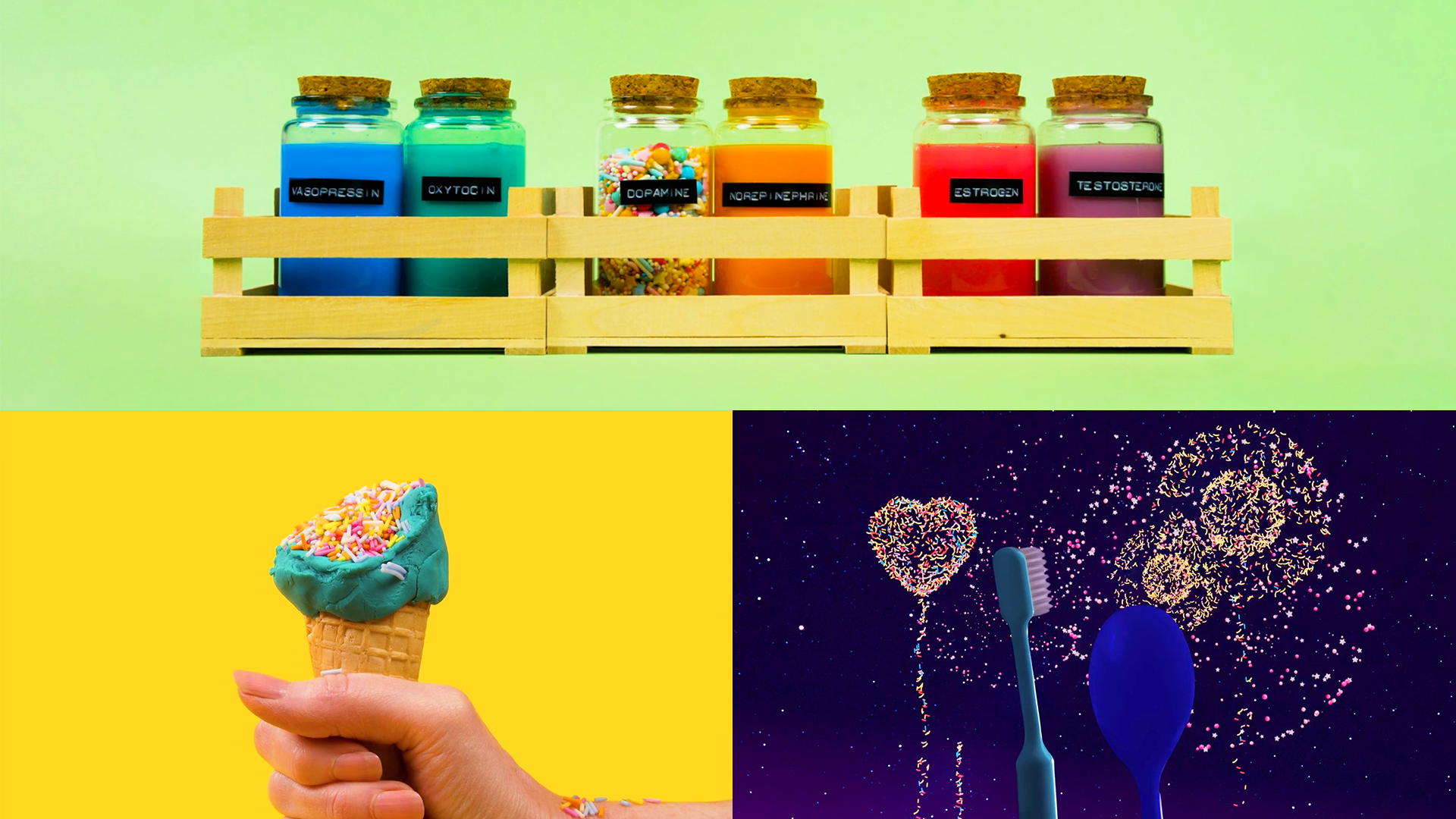The Brief
A short film that examines what happens in our bodies and brains during the three stages of love: lust, attraction, and commitment.
The Solution
A fusion of offbeat, vibrant, clever stop-motion animation, motion, and film vignettes centred around simple materials and household items that take the audience on a journey — where fruit, cutlery, and toothbrushes navigate the three stages of love — bringing distinct, irresistibly fun identities to the hormonal releases during these different phases and the script to life in an unforgettable way.
Background
BBC Ideas is known for their short films for curious minds and regularly partners with The Open University to make bitesize explainers that shed light on the concepts and ideas that shape our lives.
After making a film about Imposter Syndrome for BBC Ideas and being asked to create a piece about flexible thinking for BBC Ideas and The Open University, we were approached for more of the same: unique, zany and creative.
Given the academic nature of this project, we worked closely with Dr Claire Rostron, a neuroscientist and senior lecturer at The Open University, to ensure that the script was scientifically sound and accessible. We focussed heavily on the script, so that both language and explanations were simple, clear, and concise while ensuring we kept plenty of lesser-known fascinating nuggets and dollops of personality, to complement the playful creative treatment plans that we had up our sleeves.

Our approach
We knew we’d set ourselves a creative challenge with this one given that we’d never produced a largely stop-motion animation of this length before — let alone on a modest budget. Designing, modelling, and 3D-printing props were all out of the question.
In among a sea of ideas scrawled across our studio walls, however, a romance between a spoon and a toothbrush stood out. We thought the idea of everyday objects having a crush on each other was both hilarious and endearing in equal measure. The idea grew. We reflected on the spoon and toothbrush having a Romeo and Juliet quality to them – they are from different worlds and they share, if not a destiny, certainly a destination — inside human mouths. Once we played with a few scenarios involving these two characters, it became apparent that there was a whole utensil-based world to be explored akin to Toy Story but with ordinary household items.
We had the pleasure of working with Max Parker, who had previously studied stop-motion animation with Aardman. He set about testing each frame during pre-production to circumvent any issues during production. This phase brought up some enlightening moments for the team — I don’t think any of us ever anticipated that we’d be evaluating the optimum way to visualise a knife and fork having sex when we embarked on our creative careers.
A bright and colourful aesthetic runs throughout the piece; neuroscience can be complex and, in anchoring each hormonal release with a distinct colour, we provide a through line that complements the surreal aspect of the everyday items making it easier for the audience to understand while adding vibrancy, cheer, and cohesion.


Tilt did an incredible job turning what is a very dense subject (neuroscience) into a fun and engaging film. We worked closely as a team to make the script suitable for the intended audience, but it is Tilt’s creativity that makes this film memorable. We like to think outside of the box at The Open University, but using kitchen cutlery as a visual representation was a stroke of genius. I think it is safe to say that there was a lot of dopamine-soaked excitement associated with the finished product!
Brilliant from start to finish.
Dr Claire Rostron Neuroscientist & Senior Lecturer at the Open University